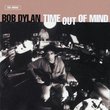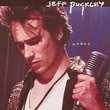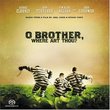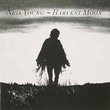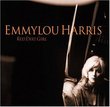| All Artists: Tom Waits Title: Mule Variations Members Wishing: 2 Total Copies: 0 Label: Anti Original Release Date: 4/27/1999 Release Date: 4/27/1999 Genres: Alternative Rock, Folk, Pop, Rock Styles: Singer-Songwriters, Progressive, Progressive Rock Number of Discs: 1 SwapaCD Credits: 1 UPCs: 045778654727, 045778654741, 045778654765, 8714092654714, 8714092654721 |
Search - Tom Waits :: Mule Variations
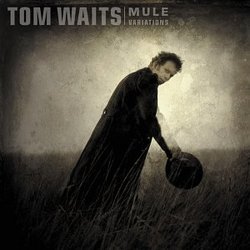 | Tom Waits Mule Variations Genres: Alternative Rock, Folk, Pop, Rock
After Tom Waits's six-year stint indulging in other artistic endeavors, hearing his familiar growl is like revving up a beloved old motorcycle after driving around in an SUV. The hard-earned wisdom and arcane sensibilities... more » |
Larger Image |
CD DetailsSynopsis
Amazon.com's Best of 1999 After Tom Waits's six-year stint indulging in other artistic endeavors, hearing his familiar growl is like revving up a beloved old motorcycle after driving around in an SUV. The hard-earned wisdom and arcane sensibilities of this set make it one of strongest releases of his entire eclectic catalog. --Matthew Cooke Similarly Requested CDs
|
Member CD ReviewsReviewed on 8/20/2009... 5 stars
CD ReviewsGet on this mule and ride. . . Wilbur Farley | Centereach, NY United States | 12/22/1999 (5 out of 5 stars) ""Mule Variations" is, simply, the most solid piece of work Tom Waits has released since "Rain Dogs". That's not to say I didn't enjoy "Frank's Wild Years" and "Bone Machine"; they both, however, only serve as sketches of the fleshed-out world Waits presents us with here.From the opening track 'Big in Japan' (a track quite reminiscent of "Bone Machine's" 'Goin' Out West')to the closing 'Come On Up to the House,' Waits is in rare form lyrically and vocally. And he's even added a new twist to his repetoire on this album: a DJ scratching in the background on several tracks, most notably the beefed-up and funkified remix of 'Filipino Boxspring Hog.'Waits covers all of the various styles and influences that inform his music with deftness on this album. He moves from the guitar-driven ballad ('Hold On') through Blues-based quirkiness ('Cold Water' and 'Chocolate Jesus') to quiet (?) piano crooning ('Picture in a Frame' and 'Take it with me when I go')and never misses a beat or sings a line that seems untrue to what we've come to love about Waits's gruff persona over the years. His unique view of the world and relationships is intact, and rings as true as ever on this album. These lines, from 'Black Market Baby,' pretty much sum it all up: "My eyes say their prayers to her, sailors ring her bell / Like a moth mistakes a lightbulb for the moon and goes to hell. . ."This album is a "must-buy" for any Waits fan, and would make an excellent introduction to his music for anybody still on your shopping list." Tom Waits: He's better than you Wheelchair Assassin | The Great Concavity | 01/09/2006 (4 out of 5 stars) "If there's anyone in the music business who's managed to fend off the over-the-hill label, it's Tom Waits, and 1999's Mule Variations is one of the most compelling documents of his staying power. Even in his forties, with a huge body of work already behind him, Tom Waits was putting out the kind of seminal albums that most acts are lucky to put out once in the prime of their careers. I wouldn't say this album is guite as great as Rain Dogs, Bone Machine, or Real Gone, but it still sits comfortably right below them, which is saying something. For a contemporary comparison, even the vaunted current runs of the White Stripes and Wilco aren't in the same category as the string of classics Waits has reeled off since Rain Dogs. Most of his songs aren't particularly complex, but (at least from Swordfishtrombones on) Waits has proven to be a master at crafting distinctive, memorable music with nothing more than his gravelly baritone and some rock-meets-blues-meets-folk-meets-country backing sounds. And of course, there's his vocal range, which covers everything from atonal rasps to achy crooning.
Waits's notorious drunken-werewolf howl actually doesn't make too many appearances here, although it is on fine form on the evil mutant blues of Big in Japan, Eyeball Kid, and Filipino Box Spring Hog. These three songs nicely showcase the noisy, cantankerous arrangements that have made Waits such a renowned experimentalist, but overall this album is more notable for its eclecticism and inspired vocalizations than for its sonic adventurism. Even more than with Bone Machine and Real Gone, you get to hear Waits from pretty much every conceivable angle here. Yes, much of it's pretty low-key, but at sixteen songs you'll still find plenty of high-quality stuff, even if Mule Variations does contain my least favorite Waits song in the form of House Where Nobody Lives. Much like Rain Dogs, this album doesn't just contain many of Waits's best songs, it contains next to none of his worst. After firing out of the gate with the aformentioned Big in Japan, Mule Variations tones down the volume a bit for a while, but what it sacrifices in volume it more than makes up for in atmosphere. Low Side of the Road unfolds into a swampy, minimalist, horn-fuelled crawl that gets under your skin and stays there. Hold On could almost be described as radio-friendly, what with its encouraging message and readily accessible structure, but its shuffling beat and Waits's world-weary storytelling style elevate it well above the status of mundane balladry. Of course, the positive vibe doesn't last too long, as Waits reveals his scarier side once again on Get Behind the Mule, an eerie, smoky little tune whose subtly creepy instrumentation is the perfect complement to the foreboding imagery of the lyrics. Pony is yet another masterpiece of Waits minimalism: a few supporting instruments drift in and out of the mix, but Waits's scratchy vocals and sparse acoustic guitar picking are all that's needed to create an ambience of disillusionment and hope at the same time. It's after Pony though, when Mule Variations enters its second half, that Waits really starts digging into his repertoire like a veteran pitcher forced to get by on smarts. As the number of tracks gets into double digits, Waits unveils no less than three piano ballads, and while they're hardly among my favorites in his catalogue, they're still notable both for the conviction in Waits's voice and the different mood he manages to bring to each one: hopeful on Picture in a Frame; mournful in Georgia Lee; and (most surprising of all) romantic on Take it with Me. At other times Waits gets just plain weird; as evidence witness the clanging backbeats of the paranoid, spoken-world What's He Building? and the decidedly unorthodox religious reflections of the country-blues tune Chocolate Jesus. And since you can't have an authentic Tom Waits masterpiece without a moving anthem to conclude things, he delivers perhaps his finest such moment here with the rousing, infectious Come on up to the House, a seven-man romp with some of his most strangely inspirational lyrics. He even manages to drop a Thomas Hobbes quote in there without sounding pretentious, which I wouldn't have thought possible. But then, this is Tom Waits we're talking about, so I guess anything's possible. " |

 Track Listings (16) - Disc #1
Track Listings (16) - Disc #1
